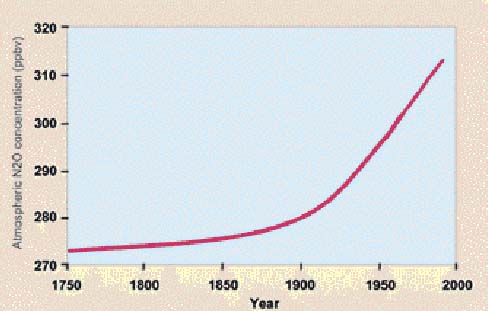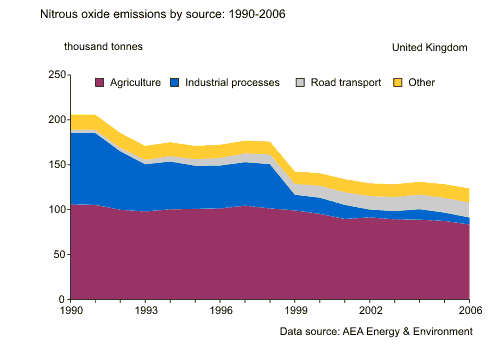| Sustainable Food Guide |  |
|
Issues
Click for what EU is doing about Agricultural impacts on Greenhouse Gases What fertilser industry says about sustainable development British Survey of Fertiliser Practice 2008 pdf UK SD Indicators for Agriculture 2010 show 50% drop in fertiliser use in last 20 years | Nitrogen plays a major role...
Largely overlooked, the amount of "reactive" nitrogen (Nr) in the air has risen considerable in last 50 years. Since 1970, world population has increased by 78% and reactive nitrogen creation has increased by 120%. (More in Science article)
N2O is produced naturally in soils through the microbial processes of denitrification (during which water-soluble nitrates are converted to gaseous products, including nitrous oxide N2O). These natural emissions are increased by a variety of agricultural practices Direct addition of nitrogen to soils: 80% of nitrous oxide emissions globally are associated with the agricultural and waste-treatment industries, most coming from artificial fertilsers (evidence?). Livestock accounts for about 65% of human made nitrous oxides according to LEAD.
Nitrates in water have been a concern for many years. New Nitrate Vulnerable Zones cover 70% of UK as part of implementation of Nitrates Directive | |||||||||
| Environmental Practice at Work © 2010 |



